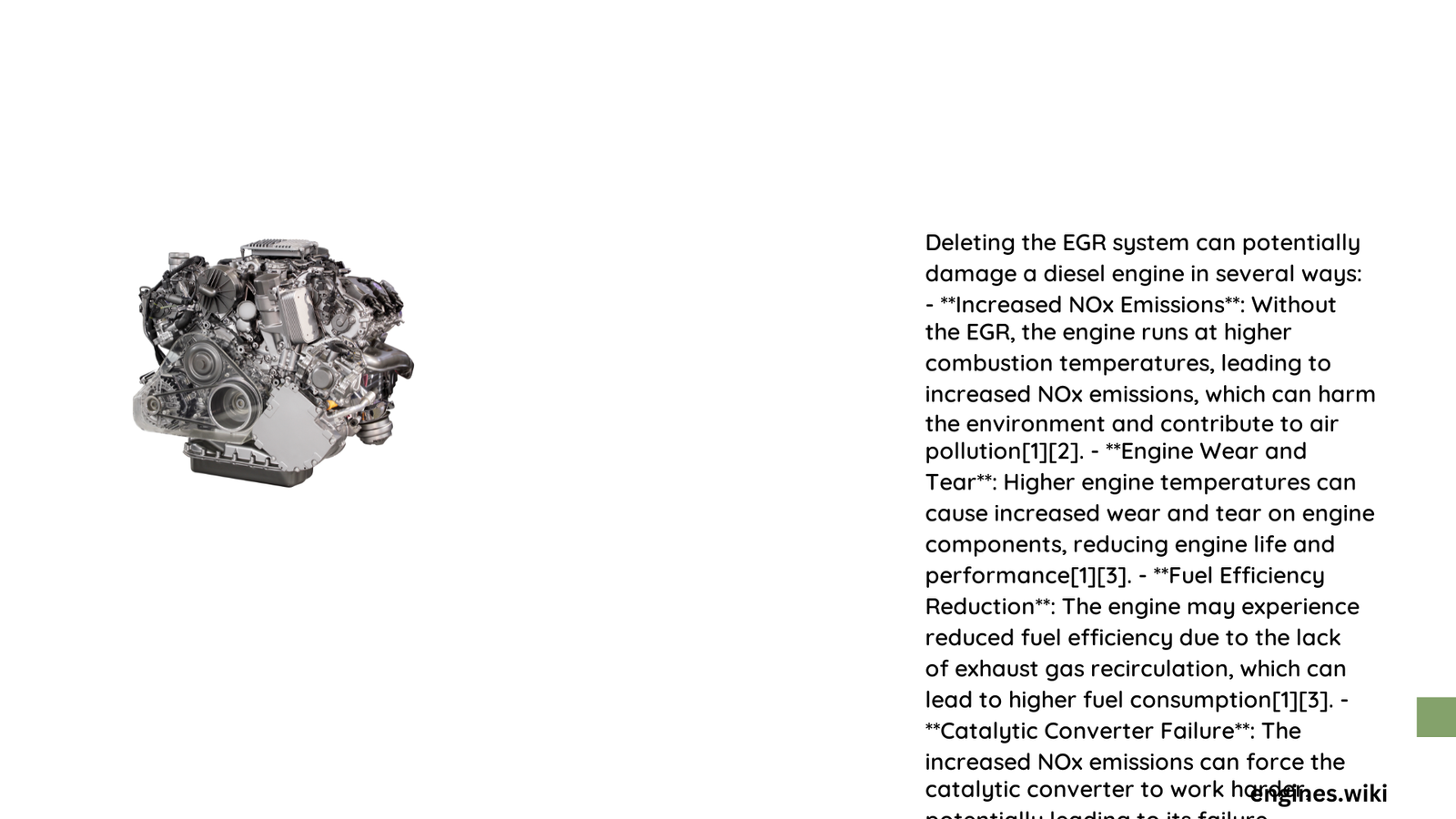Removing the Exhaust Gas Recirculation (EGR) system can significantly compromise engine integrity, leading to accelerated wear, increased combustion temperatures, and potential catastrophic component failures. Vehicle owners contemplating an EGR delete must understand the complex mechanical consequences that extend beyond immediate performance gains, potentially risking substantial long-term engine damage and reduced operational lifespan.
What Specific Engine Components Are at Risk from EGR Delete?
Combustion Temperature and Mechanical Stress
The elimination of the EGR system dramatically increases engine operating temperatures, creating multiple mechanical vulnerability points:
| Component | Potential Damage | Risk Level |
|---|---|---|
| Cylinder Valves | Accelerated wear, potential warping | High |
| Pistons | Thermal stress, increased friction | High |
| Turbocharger | Excessive heat exposure | Moderate-High |
| Engine Block | Potential micro-fractures | Moderate |
Cylinder Pressure Dynamics
Without EGR’s moderating effect, engines experience significantly higher cylinder pressures, which can lead to:
- Increased risk of cylinder head cracking
- Enhanced engine knocking probability
- Reduced overall structural integrity
- Potential premature component failure
Oil Contamination Mechanisms
EGR delete introduces additional contamination risks:
- Increased soot deposition in engine oil
- Accelerated oil degradation
- Reduced lubrication effectiveness
- Higher frequency of required oil changes
How Does EGR Delete Impact Long-Term Engine Reliability?

Performance and Wear Correlation
While some enthusiasts pursue EGR delete for perceived performance gains, the long-term consequences often outweigh short-term benefits:
- Immediate Gains: Minimal power increase
- Long-Term Impact: Accelerated mechanical degradation
- Maintenance Frequency: Increased repair requirements
- Engine Lifespan: Potentially reduced by 20-30%
Emissions and Legal Considerations
EGR delete introduces additional complications:
- Potential failure of emissions testing
- Risk of legal penalties
- Voided manufacturer warranty
- Reduced vehicle resale value
What Are the Quantifiable Risks of EGR System Removal?
Statistical Performance Degradation
Research indicates potential performance and reliability risks:
- Combustion Temperature Increase: 15-25% higher
- Cylinder Pressure Elevation: Up to 30% increase
- Estimated Engine Wear Acceleration: 40-50% faster
Economic Implications
The financial consequences of EGR delete can be substantial:
- Potential repair costs: $2,000 – $5,000
- Reduced engine lifespan: 50,000 – 100,000 miles
- Increased maintenance expenses
Conclusion: Weighing the Risks
Vehicle owners must carefully evaluate the comprehensive risks associated with EGR delete. While temporary performance gains might seem attractive, the potential for significant mechanical damage and financial burden far outweigh any marginal benefits.
Recommended Alternatives
- Regular EGR system maintenance
- Professional cleaning procedures
- Consulting certified automotive technicians
- Exploring manufacturer-approved performance upgrades
Professional Guidance
Always consult automotive professionals before making substantial modifications to your vehicle’s emissions system.
Technical Disclaimer
This analysis represents general mechanical principles and may vary based on specific vehicle models and individual operating conditions.
